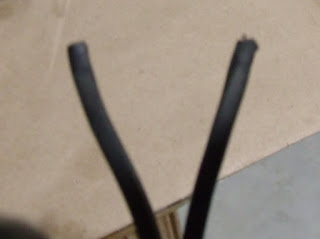To keep all my old sewing machines limber, I like to take
them off the shelf occasionally and use them on a project. I really should tag each machine to tell me
when was the last time it was oiled and used but I’m just too lazy. Anyway, I pulled this Rocketeer off the
shelf, oiled it and tested the stitches.
I have no idea how long it had been sitting unused, maybe years.
Straight stitch was fine
but wide zig zag was not.
I narrowed the stitch width and it got a wee bit better, but
still not in the acceptable range.
My first thought was that the needle bar had been shoved up
in its clamp by hitting a button or zipper but the marks on the needle bar were
in the correct position so I knew that was not the cause.
The next thought was hook timing. The point of the hook should pass just above
the eye of the needle when the lower timing mark on the needle bar is at the
needlebar bushing. It was, so that was
not the issue.
When I was watching the hook pass by the needle, I noticed
that there seemed to be a more-than-usual separation between the needle and the
hook point. The service manual says that
distance should be .018 inches but I measured it at .032 inches – almost twice
what it should be.
To be sure that the needlebar was not bent, I installed a
size 18 needle and a straight stitch needleplate and checked where the needle
passed through the hole in the needleplate.
It looked just like the drawing in the service manual, so the needlebar
was not bent.
The next step was to move the hook closer to the needle. The service manual says to loosen the two
setscrews indicated by "O"
And move the entire hook saddle. It was easy enough, after loosening the two
screws, the hook saddle swivels around the shaft it is mounted on and the hook
point can be moved closer to or farther from the needle. I moved the hook as close to the needle as
possible without hitting it and tightened the screws.
I now still have good straight stitch and the narrow zig zag
is as it should be.
I am not getting the full width zig zag that the machine is
capable of, but that is a different problem that I will tackle later.
Ed
























